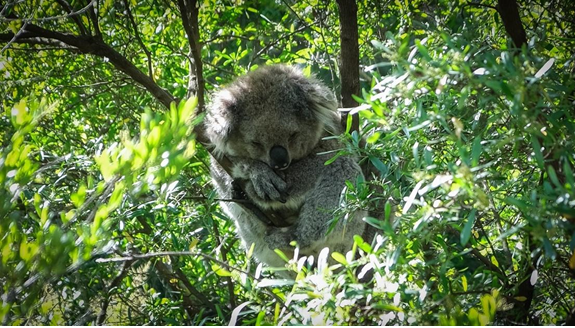Julia Yang, recipient of the 2022 Secondment Program award, has completed the program and wrote the following to share with the FLUXNET community:
In the fourth year of my PhD program at the University of Utah, I applied to the 2022 FLUXNET Secondment Program. I’d had previous experience using eddy covariance flux data in my dissertation research, however, my familiarity with flux networks had been limited to AmeriFlux in North America, and I saw the FLUXNET Secondment as an opportunity work with data from a different network and learn about an entirely new ecosystem. Therefore, my goal was to expand my scope both as a member of the international flux network and as a global change ecologist.
During my secondment, I worked with Dr. Stefan Arndt at the University of Melbourne School of Ecosystem and Forest Sciences in south-eastern Australia, studying the effects of burn severity on eucalyptus forests in the OzFlux network. I was excited to gain new experience understanding forest recovery after fire disturbance, a topic I had never studied previously but hope to apply in my future career. This area of research is becoming increasingly important, as climate change increases the occurrence and severity of fire, calling for improved understanding of how disturbance risk, management strategies, and carbon dynamics interact. A number of forest sites in the OZflux network have experienced fires of varying severity in their flux data history. The sites we investigated are shown on the map of southern Australia below. These sites included a recovering Mallee woodland that had a severe burn in 2014, a wet temperate sclerophyll eucalypt that had a severe burn in 2020, a Eucalyptus obliqua forest that had a low-medium intensity burn in 2019, and a Box woodland which experienced a low intensity controlled burn in 2021. Our goal was to take an initial look at which sites had enough quality data and a significant enough burn severity to discern effects on ecosystem functional parameters such as light use efficiency and maximum assimilation rate.

My six weeks flew by faster expected, yet I learned so much during this unique opportunity to study half-way around the world. I got to think about and discuss with new colleagues how to frame questions regarding fire recovery. By gaining exposure to the fire ecology and management in Australia, I will have new perspectives to apply to carbon management related questions in the United States. In addition, I learned new methods of flux data analysis by having the opportunity to work with Peter Isaac, the developer of the Australian PyFluxPro flux processing software. By learning how OzFlux teams deal with data issues commonly encountered (i.e., long gaps due to remote sites, small fluxes with low signal:noise ratio, advection and lack of storage flux measurements), I gained new insights and methods to bring back to my flux data analyses in North America.

The FLUXNET secondment program is a unique opportunity for the cross-pollination of ideas. Climate change is a global issue, and different parts of the world are experiencing similar challenges; providing opportunity to work together and learn as a community how to tackle these complex ecological questions. This positions flux networks as a crucial resource for ecosystem and carbon management, and demonstrates FLUXNET relevance to diverse stakeholders. Therefore, the goal of the secondment program to foster international collaborations is extremely important, and by expanding my network to include flux scientists in Australia, I have opened the door for new, international collaborations to develop in the future. Finally, I would like to thank the FLUXNET Coordination Project and FLUXNET Community Council for providing this opportunity, as well as my colleagues at the University of Melbourne who were welcoming hosts and mentors.
